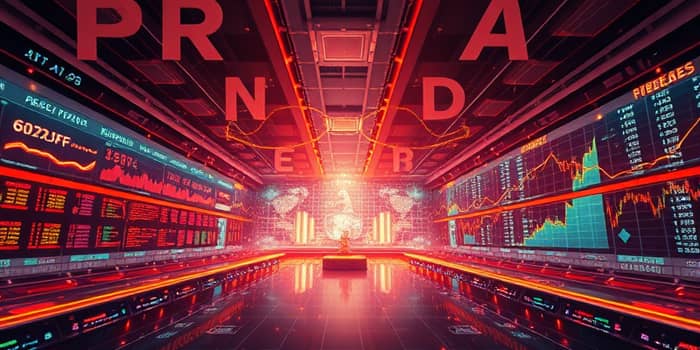
In mid-2025, electronic markets witnessed an astonishing surge in algorithmic trading, with volumes reaching unprecedented heights. Industry leaders credit advances in technology, expanded market access, and evolving regulations for this transformative growth.
Automated trading now dominates major asset classes, reshaping how investors execute strategies, manage risk, and capitalize on opportunity. As systems become more sophisticated, firms are positioning themselves to thrive in an era defined by speed, precision, and connectivity.
Tradeweb’s March 2025 results revealed a record total trading volume of $59.6 trillion. Equities, fixed income, foreign exchange, and commodities segments all contributed to this milestone, demonstrating the broad-based adoption of automated systems.
Several factors underpin this explosive growth:
Market participants now leverage AI-driven tools to scan multiple exchanges, identify price discrepancies, and execute trades in fractions of a second. The result is a dramatic improvement in efficiency and tighter bid-ask spreads.
This table highlights the diverse sectors embracing automation. While fixed income remains the largest by volume, crypto experienced the highest growth rate, reflecting its nascent but rapidly expanding ecosystem.
Automated trading offers many advantages, transforming market structure and investor behavior.
Liquidity providers deploy high-frequency trading (HFT) systems to capture narrow spreads, while institutional asset managers utilize algorithmic execution to achieve best-price fills on large orders. Retail platforms also integrate robo-advisory engines, democratizing access to systematic strategies.
The collective effect is unprecedented market liquidity, with trading venues reporting tighter spreads and lower transaction costs. Investors benefit from faster fills, reduced slippage, and more predictable performance.
Despite its advantages, automated trading introduces unique challenges. Market participants must navigate technological, operational, and regulatory risks to safeguard stability.
Flash crashes in 2010 and localized disturbances in recent years underscore the need for robust controls. Firms are deploying comprehensive risk-management tools, including kill switches, real-time monitoring dashboards, and contingency protocols.
Regulators worldwide, from the SEC to ESMA, are updating frameworks to address algorithmic trading. Requirements for pre-trade risk checks, audit trails, and system resilience aim to foster reliable markets without stifling innovation.
Looking forward, the trajectory of automated trading remains steep. Key trends to watch:
Firms are experimenting with hybrid models that blend human discretion and machine execution, seeking the best of both worlds. Collaboration between exchanges, tech providers, and regulators is critical to ensure healthy market evolution.
Education and talent development also play a role. Universities and fintech incubators are creating programs to train the next generation of quantitative analysts, data scientists, and software engineers.
Whether you are a retail investor or an institutional trader, embracing automation requires careful planning. Consider these best practices:
By following these guidelines, participants can harness the power of automation while mitigating potential pitfalls.
In conclusion, the record volumes achieved by automated trading in March 2025 mark a watershed moment in financial markets. As technology continues to advance, market participants who adapt, innovate, and manage risks effectively will be well positioned to thrive in this dynamic landscape.
The dawn of ultra-efficient markets powered by algorithms is upon us. Embrace the change, build resilient systems, and participate in shaping the future of global finance.
References













